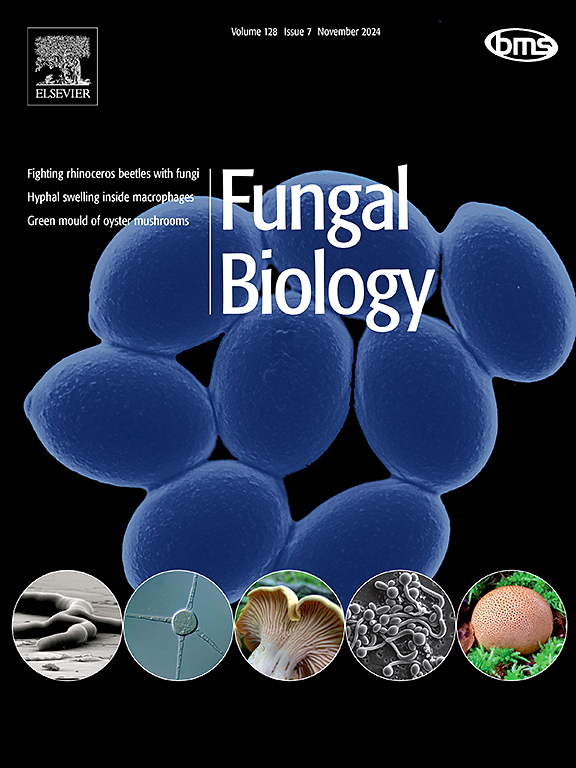Bespoke strategies of Paxillus involutus to extract potassium from diverse phyllosilicates
IF 2.9
3区 生物学
Q2 MYCOLOGY
引用次数: 0
Abstract
Phyllosilicates provide a primary source of minerals used by microorganisms and plants, particularly clay minerals, i.e., phyllosilicates of very small particle size. Fungi can actively break down (or “weather”) minerals to extract nutrients, but whether they use identical mechanisms when accessing different clay minerals is unclear. In addition, it is yet to be understood whether starvation stresses due to the limited availability of a mineral-nutrient would result in different weathering behaviours of microbes.
Here, we performed a microcosm experiment to address these questions. We used the ectomycorrhizal basidiomycete Paxillus involutus and the phyllosilicates K-vermiculite, muscovite and phlogopite. These silicates have different degrees of recalcitrance to the removal of K cations from the mineral, and each was provided in the microscosm experiment as the sole potassium (K) source. The type of potassium “extraction-assimilation” was tested against a potassium-availability gradient, with a situation of maximum starvation stress (no potassium availability) and one of maximum availability (potassium provided as a solute in the culture medium). Our study revealed that different phyllosilicate minerals stimulated different patterns of fungal gene expression, which indicated bespoke weathering mechanisms for different phyllosilicates. The potassium uptake capacity of the fungus was highest with K-vermiculite compared to phlogopite and muscovite. Interestingly, the assimilation of phosphorus by the fungus was reduced in K-depleted conditions.
Moreover, the potassium deprivation condition prompted the fungus to assimilate sodium instead. Also, in the presence of the minerals, the fungus showed significant differences in gene expression compared with the negative and positive control conditions, suggesting that the mineral environment modulates the starvation stress levels. The nutrients assimilated by the mycelium from both the minerals and the culture medium also varied according to the type of silicate added and the K starvation level to which the fungus was subjected. Based on what has been observed here, many geochemical processes could depend on fungi's genetic and functional plasticity, which would have considerable environmental consequences with a direct link between the evolution of fungi and that of the Earth's crust.

从不同的植硅体中萃取钾的梭状芽孢杆菌定制策略
植硅体是微生物和植物所需矿物质的主要来源,尤其是粘土矿物,即粒径极小的植硅体。真菌可以主动分解(或 "风化")矿物质以提取养分,但它们在获取不同粘土矿物时是否使用相同的机制尚不清楚。此外,由于某种矿物营养物质的供应有限而造成的饥饿压力是否会导致微生物的不同风化行为,也有待了解。
本文章由计算机程序翻译,如有差异,请以英文原文为准。
求助全文
约1分钟内获得全文
求助全文
来源期刊

Fungal biology
MYCOLOGY-
CiteScore
5.80
自引率
4.00%
发文量
80
审稿时长
49 days
期刊介绍:
Fungal Biology publishes original contributions in all fields of basic and applied research involving fungi and fungus-like organisms (including oomycetes and slime moulds). Areas of investigation include biodeterioration, biotechnology, cell and developmental biology, ecology, evolution, genetics, geomycology, medical mycology, mutualistic interactions (including lichens and mycorrhizas), physiology, plant pathology, secondary metabolites, and taxonomy and systematics. Submissions on experimental methods are also welcomed. Priority is given to contributions likely to be of interest to a wide international audience.
 求助内容:
求助内容: 应助结果提醒方式:
应助结果提醒方式:


